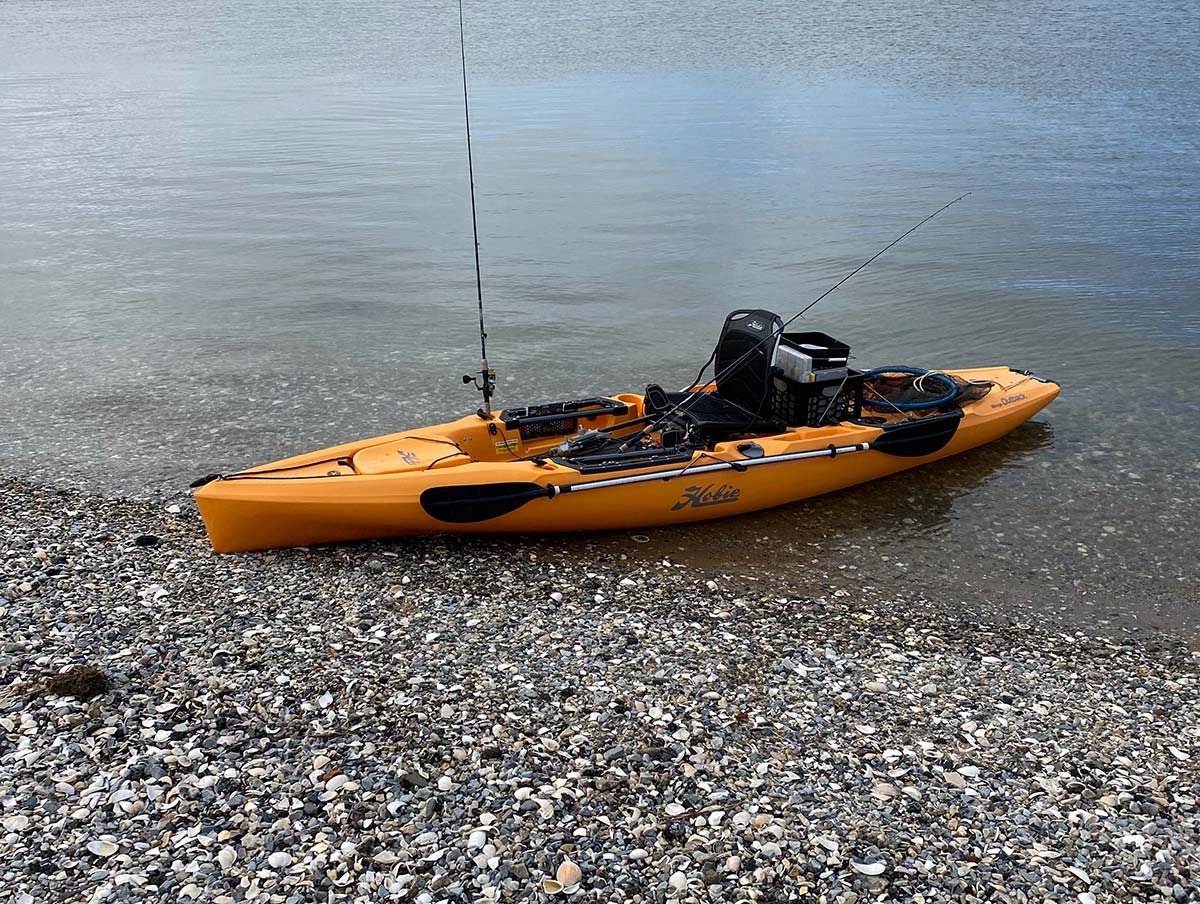
The heralded Peconic Bay spring porgy run draws anglers from far and wide during the month of May.
If you ask anyone familiar with porgy fishing, they seem to all have a similar answer when describing it. It sounds something like; Fishing for porgies is non-stop action. Scup are ravenous feeders and will hit virtually any bait or jig presented to them. On top of it all, they fight very well, are good eating, and flat-out fun to target and catch. All these points combined, make porgies one of the most commonly targeted fish. Eager anglers can’t wait for the season to begin again. When it begins though, look no further than the Peconics of Long Island. Unlike most fish that just trickle in, once these fish make a showing it’s hot and heavy action.
Don’t Be Discouraged
Most anglers don’t have boats, and while boats do offer an advantage, porgies are one of those species that absolutely don’t require a boat to be successful in catching them. I recall that some of my most intense fishing outings for porgies came from shore. Not just small fish, but jumbos too! While land-based angling does limit you, this is one fish you can still do well with when your feet are on terra firma.
Of course, if you do plan on fishing off the shore for porgies, you will need to change your tackle up a little bit so that you can maximize your success. Porgies don’t always require a long cast while shore fishing, but there are times when having a rod that can cast a little further will benefit you in reaching deep water further off the beach. Also, in the event you hook into a doubleheader, extra rod length will give you better leverage when reeling in these hard-fighters, along with better casting distance. Don’t underestimate the fighting strength of porgies. A rod that’s between 8 and 9 feet and casts up to 3 ounces will serve you well for land-based porgy fishing. As for the reel, try to find something that will balance your outfit correctly. When it comes to line, I can’t tell you how many times I’ve seen anglers go way too heavy when fishing for porgies. Back in my days working at J&J Sports in Patchogue, I would get requests all the time from porgy fishermen asking for 50-pound braid and even stronger. Please do not use this for porgy fishing. I use 20 pound and 30 maximum if I’m fishing heavy structure. The amount of strain a heavy braid will put on rods and spinning reels is immense. Some of this equipment just can’t handle it. They will break before the line snaps if you get snagged and try to pull it out. I always used to joke with my co-workers that we thought some of these fishermen were trying to rearrange bottom structure when they asked for such heavy line.

On the terminal end of your gear should either be a side-by-side or hi-lo porgy rig. Using two hooks will come in handy at times when the porgies decide to become the ultimate bait stealers. If they take one bait, you still have a shot with the other. Another commonly asked question I get is whether to use a red bead or not on the rigs. I’ve found that at times the porgies seem to be more responsive to a rig with a red bead on it so I always select or tie one with the bead. Always carry a sufficient amount of extra rigs and sinkers. Breaking off due to sticky bottom is common when porgy fishing. Also keep in mind that currents vary quite a bit in this area, so carry a variety of sinkers from 1 to 4 ounces and adjust according to the speed of the current.
Porgies aren’t typically known as picky feeders but I’ve seen times when they won’t hit a piece of clam as well as a sandworm on more than one occasion. When targeting these fish bring both worms and clam in case this situation arises. Of course, porgies will take many other baits too including bloodworms, squid, Gulp, and Fishbites to name a few.
Yak-Attack
The ever-growing trend of kayak fishing shows no sign of letting up, and for good reason. Owning a kayak is relatively inexpensive, they can be launched from places boats cannot, and can access some shallow water areas that boats cannot get into. You can virtually launch a kayak anywhere and they are easy to transport on your vehicle’s roof and in truck beds.
Utilizing a kayak for Peconic Bay porgy fishing absolutely has its benefits. You can reach much deeper water compared to shore fishing. You can also access spots that you could never access on the shore. Know the following if you do choose to porgy fish from a kayak this spring: always wear a PFD and proper kayaking attire, including a dry suit if the water is chilly and have a plan in case you fall off. Also, keep an eye on your tides so that you don’t end up having to go against the tide for several miles. I like to plan my trips in accordance with the direction that the current will run. For example, if the destination is to the right of my launch spot and the incoming tide is going right, I’ll fish with the tide to my spot and then wait for the turn of the tide to head back to my launch site. Keep in mind that currents in the Peconics can be swift, and using this technique can save you a lot of energy and time. Plan precisely when kayaking waters where current is a factor.
Fin Chaser: 516-643-0940
Peconic Star: 631-875-2631
Shinnecock Star: 631-728-4563
Celtic Quest: 631-928-3926
A proper rod and reel setup for targeting porgies from a kayak differs from your typical shore fishing rod. For a kayak, try to keep the length in the 6-1/2 to 7-foot range with a shorter butt end. The concept behind this is so that you can maneuver a fish around the bow of your yak if need be. The short butt of the rod keeps things compact in a vessel where room is already limited. On my outings, I usually carry two or three rods with me. Make sure one of them is suitable for lighter weights and one can handle a heavier sinker. It wouldn’t be a bad idea to choose a baitcaster or small conventional reel for the heavier stick spooled up with 20 or 30-pound braid. This will be used for straight up and down fishing with a hi-lo rig. Moving over to the lighter setup, a spinning rod that can handle ½ to 1 ounce is perfect. I suggest using 10-pound braid on this outfit to get light weights down the bottom easier and maximize the amount of fun you have.
I’m a big advocate of light tackle. Combine this idea with porgy fishing and you’ll have yourself one heck of a time. What some anglers haven’t realized is that porgies can be caught on small jigs or lures when they’re feeding heavily. I had my good friend Andrea modify a blackfish jig so that it took small hooks suitable for porgies. Tipping these jigs with a small piece of bait and fishing it along the bottom in a similar manner to fishing jigs for blackfish proved to be deadly and lots of fun. Sometimes you can even switch over to a very small tin or soft plastic without any added bait and catch them this way too. A 005 AVA jig works great for this. When porgy fishing this way, I’ll use a 3-foot leader of 25-pound monofilament tied direct to my braid with a Uni-to-Uni knot. When fishing off a kayak like this, you can either drift or anchor up. That’s up to you and the conditions you face on the water. If you do choose to anchor up, implement a chum pot into your game plan. A steady dose of chum can keep the fish right under you for an extended period of time.
Party Of One, Two, Many
While a kayak extends your opportunities more than fishing off the shore, you can bring it to another level by using a boat to cover these same waters. Besides, if you enjoy company and more space on the water, a boat is for you. Despite the advantages a kayak does offer, ample space isn’t one of them. With a boat, you can quickly reach destinations and switch spots in no time. If the bite turns off in one location, you can get up and try somewhere else quickly.
My techniques off a boat don’t vary much compared to kayak fishing for porgies. Once again, carry a light and heavier action rod for the different techniques I covered. Anchoring and drifting can both be effective, depending on the conditions for the day and the use of chum can be put into effect again as well. If you prowl the 30- to 60- foot depths, there is a good chance you will find these fish stacked up.
-Jessups Neck
-Robins Island
-Gardiners Bay
-Greenlawns
-Stirling Harbor
-Cedar Beach County Park (North Fork)
-Orient Beach State Park
-Cedar Point County Park (South Fork)
Access with a boat can be a little tricky on this body of water. You can’t just throw a boat in anywhere like a kayak, as many launch ramp locations require a town permit. A few to choose from if you do have the town permits are Long Beach Bay/Orient Harbor launch, Northwest Harbor County Park in East Hampton, Norman E. Klipp Park in Greenport, and Cedar Beach Ramp in New Suffolk. Remember the DEC is also finishing up its 5th site called the Hashamomuck Marine Waterway. This site is located to the south of Old Main Road in Southold, just east of Port Of Egypt Fishing Station and Marina and should be completed by July. Keep this spot on your radar for easy access to some great fishing.
Still wanting to get on a boat but don’t have one? Don’t worry because several charter and party boats fish these waters during the heat of the porgy run and locate their boats in the Peconics for the month of May. These boats all have great reputations for getting customers on the fish and sending them home with smiles on their faces. If you are new to fishing, this is a good way to go. They rig everything up for you and provide you with tackle and bait if you don’t have your own. Choosing to sail on a charter or party boat ensures a smooth and fun day on beautiful Peconic Bay while targeting a true spring favorite.



